We have reached the third installment of MY FAVORITE SEASONS, FROM LEAST FAVORITE TO MOST FAVORITE, 1969-PRESENT. I can’t swear it’s the middle installment, but below you’ll find the middle portion of the list: the seasons just before the median (Nos. 33-29); the median season (No. 28); and the seasons just beyond the median (Nos. 27-23). As is implied by reaching the center square and adjacent environs, the overall Mets experiences here are veering more toward the explicitly positive than they were at the outset of this journey. Of course if you’re a Mets fan, you understand that even years whose statistical output appears splendid on the surface may not resonate as enchanting when you remember what they were actually like to live through. This explains how seasons with 88 or 92 wins will rank well below seasons with 41 or 68 wins. To be clear, winning beats losing 162 out of 162 times. Nevertheless, there are winning seasons and there are favorite seasons. They don’t always meet in the middle. My desire to say something nice about what I perceive as not altogether nice Met days remains, yet I stowed the kid gloves for certain of these campaigns and let my lingering discontent seep where appropriate. If a season encompassed 88 or 92 wins yet lands in the lower half of a ranking of favorites, I have to think it brought its infamy upon itself.
As in Part One (Nos. 55-44) and Part Two (Nos. 43-34), I have striven to mine my rooting subconscious and share some memories and insights that haven’t come up in these pages before. That gets more challenging as the countdown goes on, given that over the past nineteen years of blogging, I’ve shared a lot, particularly about the seasons I liked and loved most (not to mention the seasons that were in progress between 2005 and 2023). A person has only so much past, even one who goes back as far as I do. If bits and pieces begin to sound familiar to you as a regular reader, first off, thank you for reading regularly, and secondly, I hope my attempt to craft new spins adds a fresh element.
I don’t know much about gambling per se, but here’s a piece of probably profitable advice: the next time the Mets are coming off a playoff year, bet the under the year after. The Mets have made the postseason ten times. Ten times, the Mets have posted a lesser record the year after; on average, their won-lost mark is minus-13 versus the more satisfying and successful season preceding it. I suspect that’s what the wagering community refers to as a lock. Not that precedent predicts everything, but 2007, when the Mets couldn’t maintain their division-winning pace of 2006, should have taught us once and for all that not only won’t the year after be quite (or nearly) as good, it won’t feel as good. Given a positive trendline, we’ll never stop trying to convince ourselves it feels comparably great — we might even be brimming with confidence as late as the middle of September — but don’t bet it will turn out well either mathematically or experientially.
32. 1987
“You know what it was like?” I remember telling a friend that November. “It was like having a nagging sinus headache all season.” I’ve been forever prone to sinus headaches that almost but don’t completely go away no matter what I take for them. I can operate like a functioning human being if I must, even manage to have some facsimile of fun in the intervals when it seems to recede, but until it’s completely gone, I know something’s off and I find myself pressing an index to the top of the bridge of my nose on whichever side is piercing most. It doesn’t help. What really helps is holding an index finger high in the air like I did the year before 1987.
31. 2001
For four-and-a-half months, 2001 provided a template for cruddy 2023. Then, as August grew late, 2001 began to echo 1973. Then the second Tuesday in September happened, which had nothing to do with baseball, yet there were the Mets, resuming their roll when play unpaused the Monday after that Tuesday, on September 17; and coming home to New York on September 21; and Mike Piazza hits a homer; and they win that night, and they win the next night; and they’ve picked up ten games in the standings in a five-week span; and you gotta believe something way bigger than a charge-from-behind pennant race is happening at Shea Stadium. Then, in the shadow of two fallen towers, the Mets find a way to break whatever corners of our heart aren’t already broken not once (Braves 5 Mets 4 in 11 on September 23), but twice (Braves 8 Mets 5 via a walkoff grand slam on September 29). Then, save for Mike’s incandescent swing, the entire season is memory-holed. I’m here to tell you it did happen. It was real and it was almost spectacular.
30. 1978
 On April 23, the back page of the Daily News led its sports coverage with a headline trumpeting the Mets’ capture of the top spot in the National League East, something NOBODY was expecting at the outset of the second year of the Grant’s Tomb era. Staring at it when I was fifteen, my mind worked like Lisa Simpson’s years later when she met a cool kid who paid her hat a compliment. “Scanning for sarcasm…it’s clean!” I liked the headline so much, I clipped it and taped it to the door of my bedroom closet. The News that Sunday wasn’t messing with me. Jack Lang may have been shaking his head while he typed it in the Wrigley Field press box, but his lede was as sincere as it was accurate: “The first place Mets! Roll that around on your tongue for a while and see how it sounds.” Manager Joe Torre affirmed, “It sounds beautiful to me, just beautiful.” The explanation that followed in the wake of the Mets beating the Cubs was just as mellifluous: “The victory, combined with the Expos’ sweep of the Phillies in a twinbill, gave the Mets first place all by themselves.” Cripes, Lang even referred to Mardie Cornejo and Skip Lockwood as “co-aces of the bullpen”. Mardie Cornejo! All that was missing was praise for the blue and orange trimming the team had sewn on to the cuffs of its sleeves for ’78, though in those days New York’s Picture Newspaper didn’t publish in color.
On April 23, the back page of the Daily News led its sports coverage with a headline trumpeting the Mets’ capture of the top spot in the National League East, something NOBODY was expecting at the outset of the second year of the Grant’s Tomb era. Staring at it when I was fifteen, my mind worked like Lisa Simpson’s years later when she met a cool kid who paid her hat a compliment. “Scanning for sarcasm…it’s clean!” I liked the headline so much, I clipped it and taped it to the door of my bedroom closet. The News that Sunday wasn’t messing with me. Jack Lang may have been shaking his head while he typed it in the Wrigley Field press box, but his lede was as sincere as it was accurate: “The first place Mets! Roll that around on your tongue for a while and see how it sounds.” Manager Joe Torre affirmed, “It sounds beautiful to me, just beautiful.” The explanation that followed in the wake of the Mets beating the Cubs was just as mellifluous: “The victory, combined with the Expos’ sweep of the Phillies in a twinbill, gave the Mets first place all by themselves.” Cripes, Lang even referred to Mardie Cornejo and Skip Lockwood as “co-aces of the bullpen”. Mardie Cornejo! All that was missing was praise for the blue and orange trimming the team had sewn on to the cuffs of its sleeves for ’78, though in those days New York’s Picture Newspaper didn’t publish in color.
The season was fifteen games old. The Mets’ grip on first place didn’t survive the weekend.
When 1978 was much older, on August 10, the News, the Post and the Times went on strike for what amounted to the rest of the season, so I didn’t get to read what would have been presumably much more cynical coverage of the Mets’ predictable fall from grace. There were a few strike papers available — the City News, the New York Daily Press and the New York Daily Metro stand out in my recollection — but their Met coverage tended to be brief, derived from wire reports and usually a day late; they’d have Tuesday home game results in print on Thursday. In 2018, Tom Verducci wrote at length about how the 1978 Yankees coalesced for their historic comeback because they had less local print media magnifying their every move. Overnight, scrutiny and pressure simultaneously diminished. “The suburban papers were there,” then-PR director Mickey Morabito remembered for Verducci. “They wrote game stories, and they went home. It was like a vacation.” As unfortunate as that byproduct of the job action was, I can sort of relate. The only 1978 Mets headline that stays with me, regardless of their last-place finish, is METS TAKE 1ST PLACE.
29. 2010
Between April 19 and July 27, I attended fourteen games at Citi Field. The Mets’ record in those contests was 14-0, meaning I was 14-0, easily my most incredible streak of luck in all my years of game-going. The Mets were pretty good at home in that span without me, going 15-12 (versus an abysmal 18-29 road record), but they weren’t utterly incapable of losing like they were when I was around. Somewhere along the way, the Mets’ A/V squad adopted a song called “Uprising” by a band called Muse as their would-be “L.A. Woman” for 2010. If the Mets won at home, the loudspeakers would blare it following a requisite dose of “Takin’ Care of Business”. I heard “Uprising” in regular rotation whether I wanted to or not. Given what it represented, I wanted to hear it in a loop and sort of did. I couldn’t tell you what they played after losses between April 19 and July 27, immune as I was to being there for such unfortunate events. The chorus of “Uprising” ended on a message that spoke to what Muse guaranteed was to come: We will be victorious. Maybe they should have stuck with what had just happened rather than trying to be fortune-tellers; even a fan who was going 14-0 never presumed a win in advance. There was also a line about watching our flag ascend. Alas, no banner other than the star-spangled one rose in Flushing in 2010. Still, when I hear “Uprising” these days, which only happens if I click on the iTunes playlist I complied for myself that season, I’m verifiably unbeatable.
28. 2014
I would hope John Mellencamp doesn’t mind that I’ve retroactively adopted the lyrics from “Cherry Bomb” to describe the year before the Mets won their most recent pennant: “We were young, and we were improving.” I wasn’t really thinking “hey, we are young, and we are improving” as 2014 dragged along, because a) the Mets’ roster included 40-year-old Bobby Abreu and 41-year-old Bartolo Colon, and b) the Mets fell below .500 on May 7, never to rise above it again. We were stuck in a cycle of mediocrity dating back to the opening of Citi Field. Never fewer than 70 wins, never as many as 80 wins. The 2014 Mets topped out at 79. But they also included within their number initially unheralded righty Jacob deGrom (26) earning the Rookie of the Year award; fellow starter Zack Wheeler (24) getting the hang of disposing of innings in a timely manner; revelation reliever Jeurys Familia (24) setting up repurposed closer Jenrry Mejia (24), each of these talented pitchers throwing to an increasingly confident Travis d’Arnaud (25); Juan Lagares (24) presiding over funerals for fly balls in center so consistently that he was awarded a Gold Glove in his first full season on pasture patrol; and less smooth infielder Wilmer Flores (23) brandishing a bat that made a person occasionally stop worrying where the kid from Venezuela’s mitt would fit best. On their better nights, I began to think we had something here. Their better nights leaned to too few and far between, so I didn’t think it that often. Some years it’s hard to see what’s coming together when there’ve been so many years when everything falls apart.
27. 1976
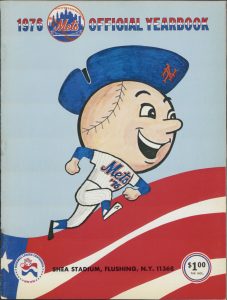 Had I been a less discerning 13-year-old, I’d probably maintain gauzier nostalgia for 1976. A sampler of signifiers pop like the National League centennial patches and special-occasion pillbox hats worn by the Mets that year and only that year. Mike Phillips hit for the cycle. John Milner swatted three grand slams. Bruce Boisclair became Bruce Boisclair. Good ol’ Kooz finally won 20. Dave Kingman was at his Dave Kingmaniest. Brooklyn’s own Lee Mazzilli came up in September and hit a home run that effectively knocked the second-place Pirates from contention. For the very first time in my life, I saw Tom Seaver pitch in person (fittingly enough with no run support in a 1-0 loss). And from 1970 through 1983 inclusive, no Mets team won more games than the ’76 bunch: 86. What’s to be discerning about at that age?
Had I been a less discerning 13-year-old, I’d probably maintain gauzier nostalgia for 1976. A sampler of signifiers pop like the National League centennial patches and special-occasion pillbox hats worn by the Mets that year and only that year. Mike Phillips hit for the cycle. John Milner swatted three grand slams. Bruce Boisclair became Bruce Boisclair. Good ol’ Kooz finally won 20. Dave Kingman was at his Dave Kingmaniest. Brooklyn’s own Lee Mazzilli came up in September and hit a home run that effectively knocked the second-place Pirates from contention. For the very first time in my life, I saw Tom Seaver pitch in person (fittingly enough with no run support in a 1-0 loss). And from 1970 through 1983 inclusive, no Mets team won more games than the ’76 bunch: 86. What’s to be discerning about at that age?
Well, there was all that dust the Mets were left in by the Phillies. Pittsburgh wasn’t the only team that couldn’t make a successful run. Our third-place finish by this point was a little too familiar and that 86-victory total, while mathematically more than every Mets club that wasn’t from 1969, was practically as backloaded as Shohei Ohtani’s contract. We were 52-55 on August 2, 34-21 the rest of the way, better than everybody in baseball — 34-16 before an 0-5 sneak preview of 1977 ended the schedule. Even that badge of out-of-it honor was tarnished in May the next year in the wake of the Mets’ godawful start. Speaking for the board of directors, John Payson thought it necessary to visit the clubhouse and read to the players a statement of support for embattled chairman M. Donald Grant (an inversion of Grant telling the players four years earlier that management still believed in them). Within his declaration, Payson reasoned, “Our team played very well after the All-Star game last summer,” plus 1969 and 1973 went so swimmingly. “The Mets have had many early-season slumps and have pulled out of them by playing as a team” was his version of go get ’em. The sparkling conclusion to 1976 had been weaponized in the name of preserving the status of the man who was about to trade Seaver. So thanks for ruining that, too.
26. 1972
In a kinder world, Yogi Berra wouldn’t have been managing, because Gil Hodges would have still been alive, but we got the world we got, and Yogi was now in charge. I knew Jon Matlack and John Milner from veritable cameos the year before; now they were staples of our rotation and lineup, respectively. Rusty Staub? We got Rusty Staub? We did! We got Jim Fregosi? We did. Two distinct All-Star backgrounds, two distinct impacts unfolding. Oh, and Willie Mays. WILLIE MAYS WAS ON THE METS! Meanwhile, five world champions from 1969— Ron Taylor, Al Weis, Donn Clendenon, Art Shamsky and Nolan Ryan — weren’t back from the year before. The 1972 Mets are the first Mets I remember considering materially transformed from the set of Mets who came before them. They still played at Shea, they still featured Seaver, they still finished third and they still limited themselves to 83 wins (albeit in a slightly strike-abridged season), but the times, they were a-changin’. Not necessarily for the worse. Not necessarily for the better. Definitely and necessarily different.
25. 1981
I came roaring into my Age 18 season tacitly determined to be the biggest Mets fan anybody was likely to encounter. I don’t know that there was much competition. Wore my new Starter jacket everywhere, my vintage Mets ski cap when chilly enough. Cut school for the Home Opener (rained out). Withstood a miserable 8-24 beginning to the schedule. Talked myself into endorsing the trade of Jeff Reardon for Ellis Valentine. Lit a candle rather than curse the darkness when the strike wiped out the heart of summer and robbed me of an answer to the trivia question, “What did the Mets do on the day I graduated high school?” (answer: nothing). Rejoiced at the return of baseball, no hard feelings for either side in the labor-management dispute. Had to go to Shea for an intrasquad game open to the public. Had to go to Shea for a tune-up exhibition against the equally woeful Blue Jays. Had to plant myself in front of the TV when the Mets and Cubs commenced the so-called second season on August 10, all also-rans’ April-to-June sins erased, all teams suddenly contenders for a mini-division title and a ticket to the expanded playoffs.
The Mets beat the Cubs in a thrilling Reopening Day extra-inning affair. Natch, I had to keep watching all I could because in two or so weeks, I’d be headed off to the west coast of Florida for college, which would be handy come Spring Training, but wasn’t a particularly Mets-accessible locale otherwise. On the Tuesday afternoon when that series at Wrigley continued, my mother asked me what I was up to. “Gee, I think I’m gonna watch the Mets,” I said with a chuckle. What else would I be doing at this particular moment, especially in 1981? Not only was I running out of Mets time in New York, I hadn’t had any official Mets time for two months. This wasn’t a split season. It was trisected. The “first half” was halted with the Mets 17-34. The “second half” was slathering hope on my wish sandwich — the Mets indeed teased me hard before finishing 24-28. The middle “half,” however, was a big, fat zero-and-zero. No Mets at all. Surely my mother understood that. The strike had been in all the papers.
Yet she chose that day in August to project on me her anxieties about how I need to get serious about my studies and what I should really be doing today is bearing down on the course catalog; if I watched baseball instead, I was already showing myself to be on the wrong path for not just college but life. Mind you, I was already enrolled for three of my four first-term classes, but one I’d initially wanted to take wasn’t available when I went through orientation in July, so, yes, there was a piece of unfinished pre-college business hanging in the air. But a) in those pre-computerized days, there was nothing to do about registering until I showed up on campus; and b) I needed to spend three hours and two minutes on this particular day poring over class descriptions? I could have said “three hours” right there, but three hours and two minutes was the length of the Mets’ win over the Cubs on August 11.
I think you know how I spent that Tuesday afternoon…and what path my life was going to take.
24. 1983
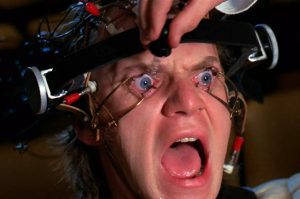 Nobody pried my eyelids open against my will and directed my undivided attention to a screen crammed with disturbing images in the fashion of A Clockwork Orange, but nobody had to. I voluntarily got caught up in a marathon of SNY’s Mets Yearbook series a while back and couldn’t look away, particularly during the deep, deep dive into the second-division epoch that spanned, for me, eighth grade to my junior year of college.
Nobody pried my eyelids open against my will and directed my undivided attention to a screen crammed with disturbing images in the fashion of A Clockwork Orange, but nobody had to. I voluntarily got caught up in a marathon of SNY’s Mets Yearbook series a while back and couldn’t look away, particularly during the deep, deep dive into the second-division epoch that spanned, for me, eighth grade to my junior year of college.
The 1977 edition: Someday, according to manager Joe Torre, we’re going to remember the Tom Seaver trade as the Steve Henderson trade.
The 1978 edition: Bob Murphy introduces us to new board chairman Lorinda de Roulet, who promises us everything’s going to be just swell in 1979.
The 1979 edition: Here’s a visit with Ed Kranepool to remind us that he, like the most grizzled viewer, is a survivor of everything this franchise has dished out.
Dollops of whimsy filtered in throughout to leaven the presentation — who doesn’t love utility infielder Bobby Valentine copping to winning Bazooka’s bubble-blowing contest by charming a lady judge? — but an undercurrent of inescapable horror lodged itself within my psyche as I was being reminded of how bad those teams and seasons truly were and how as my adolescence morphed into my early adulthood, I kept requesting, in so many words, more please. It went on like that into the 1980s, particularly 1982, the sixth of these repurposed highlight films from the dark ages, when three separate times narrator Steve LaMar, new and ultimately forgotten radio voice of the New York Mets, flogged the wonders of DiamondVision.
Just when I was about to scream, “I CAN’T TAKE IT ANYMORE!” decades after, in fact, I took it continuously, Mets Yearbook: 1983 airs and hints that this segment of the rewinding of my Met life is about to be over. Darryl Strawberry has arrived. Keith Hernandez has been traded for. Tim McCarver narrates, so even the voicing steps up in class. Seventh time was the charm. We know because of what came directly after 1983 that any propagandistic retelling of this cellar-dwelling year lands in the succeeding century as a hindsight special. Why was this 90+ loss season different from all other 90+ loss seasons? Because it would be followed by a string of 90-win and better seasons. You sensed it at the time even if you couldn’t identify exactly what awaited beyond the orange-and-blue horizon. We had to get out of the sixth place if it was the last thing we ever did. Turned out escaping the basement was next on our agenda.
23. 2008
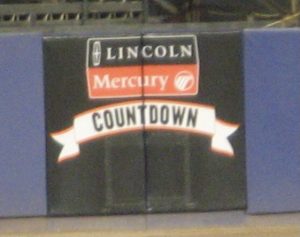 Stupid hypothetical question ideal for sports talk radio at its insipid finest: you can have only one of two — a playoff spot clinched on the last day your team is scheduled to play baseball in the only ballpark you’ve ever known as yours OR a fitting goodbye to that ballpark. The catch is that if you get the postseason berth, the only farewell your team sanctions is the handing out of ticket applications for the new ballpark next door, brought to you by your New York-New Jersey Lincoln-Mercury dealers. Which do you choose? I’ll hang up and listen.
Stupid hypothetical question ideal for sports talk radio at its insipid finest: you can have only one of two — a playoff spot clinched on the last day your team is scheduled to play baseball in the only ballpark you’ve ever known as yours OR a fitting goodbye to that ballpark. The catch is that if you get the postseason berth, the only farewell your team sanctions is the handing out of ticket applications for the new ballpark next door, brought to you by your New York-New Jersey Lincoln-Mercury dealers. Which do you choose? I’ll hang up and listen.
You should be able to have both, but that’s not how stupid hypothetical questions work. In reality, more consistent clutch hitting or merely serviceable relief pitching would have earned the 2008 Mets at least a Wild Card slot, perhaps the National League East title, and from there, who knows what festive occasion well into October serves as backdrop for Shea Stadium’s final baseball game? Instead, we sustain our second annual Closing Day punch to the gut to seal shut Shea’s 45th and final season on September 28, getting eliminated from the playoff picture in the process…yet have our broken heart mended as best as possible under dreary circumstances by a postgame parade of Met legends, semi-legends and legends mainly to us whose presence is announced by our beloved Howie Rose.
Jack Fisher and Ron Hunt.
The Glider and The Stork.
Little Al Jackson and Big Dave Kingman.
Buddy and Rusty.
Swannie and Mazz.
Mex and Kid.
Fonzie and Robin.
An array of league champs and world champs.
Already inducted Mets Hall of Famers and surefire Mets Hall of Famers once the Mets remember they have a Hall of Fame.
Wayward favorite sons Darryl Strawberry and Dwight Gooden.
The one and only Willie Mays.
The one and only Mike Piazza.
The one and only Tom Seaver.
They all acknowledge us. We acknowledge all of them. Howie instructs each of them to touch home plate. Each of them touches us in doing so. The Beatles’ “In My Life” is cued up. Tom toes the rubber and sets and fires to Mike in his crouch. It’s a called strike last. The battery of a Met lifetime strolls together toward the 410 sign in center (emblazoned on a temporary panel of an outfield fence already being sold in sections on the memorabilia market, but we’ll overlook that discordant note for the moment). It’s the perfect sendoff on a most imperfect day, the epitome of taking the bitter with the sweet, the sweet finishing percentage points ahead.
I’m sorry, was there a question?


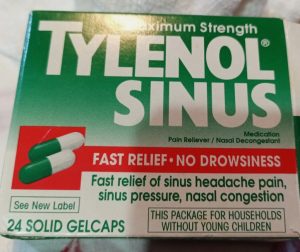
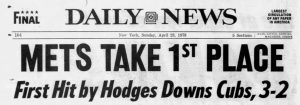
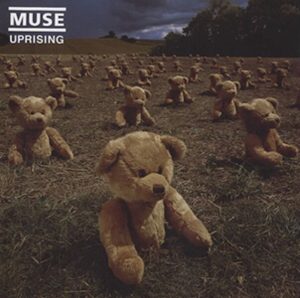

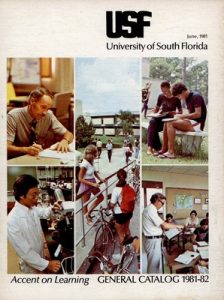
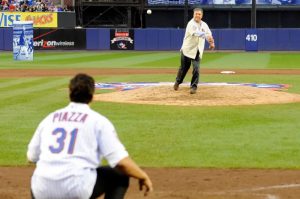





Terry Pendleton.
(sigh)
Can’t wait to hear about 1988.